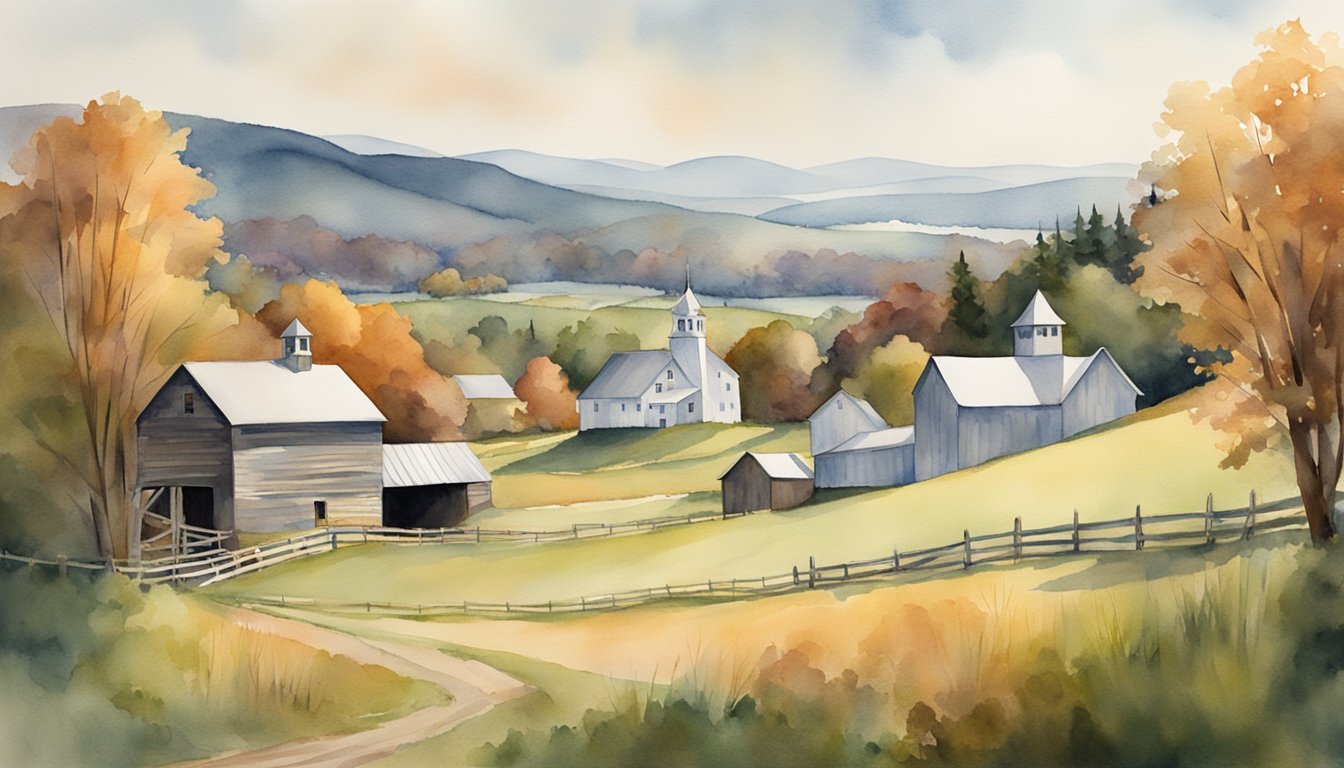Welcome to Vermont
The Green Mountain State
Vermont, located in the northeastern United States, is known as the “Green Mountain State”. It is the 45th largest state by land area and is surrounded by Massachusetts, New Hampshire, and New York. The state’s capital is Montpelier, and its largest city is Burlington.
Vermont’s landscape is dominated by the Green Mountains, which gave the state its nickname. This beautiful area is filled with forests, rivers, and lakes, making Vermont an outdoor lover’s paradise. The state is particularly attractive in the autumn, when the trees display a stunning array of vibrant colors.
State Symbols and Emblems
The state of Vermont boasts a variety of symbols and emblems that represent its identity and natural beauty. The state motto, “Freedom and Unity,” speaks to Vermont’s independent spirit and its commitment to working together for the common good.
Vermont’s state tree is the sugar maple, known for its magnificent fall colors and its sap, from which the famous Vermont maple syrup is produced. The sugar maple can be found throughout the state, further enhancing its quintessential New England charm.
The state bird, the hermit thrush, is a small, melodic songbird that can be heard singing in the forests of Vermont. The state flower, the red clover, produces an attractive purple bloom and is a favorite of the Vermont state insect, the honeybee. Both the red clover and honeybee contribute to the state’s thriving agricultural sector.
In addition to these symbols, Vermont has other notable emblems, such as the state animal, the Morgan horse, which is a versatile and hardy breed that originated in Vermont. The state fish, the brook trout, is a popular species among anglers, due to its beautiful markings and delicious taste.
Vermont’s state fruit is the apple, which is widely cultivated throughout the region. Apple orchards are abundant and contribute to the state’s agricultural and tourism industries. The state beverage, milk, comes from Vermont’s numerous dairy farms and is an essential part of the state’s economy.
Finally, the state gem, grossular garnet, can be found in certain areas of Vermont. This exquisite gemstone adds an extra touch of natural beauty to this fascinating state.
Vermont’s Rich History

From 1777 to Statehood
Vermont has a rich and diverse history, which dates back to 13,000 years ago with evidence of Indigenous people living on the land. The area was explored by French and British settlers during the 17th and 18th centuries, with the French explorer Samuel de Champlain first arriving in 1609. Throughout its history, Vermont played a significant role in different conflicts, including the Revolutionary War and the Civil War.
In 1777, Vermont declared itself an independent republic, known as the Vermont Republic, separate from New England and the British colonies. It remained as a republic for fourteen years, during which it had its own currency and constitution. On March 4, 1791, Vermont became the 14th state to join the Union, bringing its brief period of independence to an end.
Key Historical Figures
Vermont’s history is filled with several notable figures that have influenced the state and the nation. The Green Mountain Boys, led by Ethan Allen, were a militia group that fought against the British during the Revolutionary War. This group played a crucial part in the American Revolutionary War and was instrumental in Vermont becoming a state.
Two of Vermont’s most famous historical figures are U.S. Presidents Chester A. Arthur and Calvin Coolidge. Both men had a significant impact on the United States during their time in office. Chester A. Arthur, the 21st President, was born in Fairfield, Vermont, and served from 1881 to 1885. Calvin Coolidge, 30th President and a native of Plymouth, Vermont, was in office from 1923 to 1929.
Vermont’s rich history is not just limited to its time as a republic or its role in different wars. Its inhabitants, known as Vermonters, have diverse cultural and historical ties. With influences from both French and British settlers, the state’s name is derived from the French words vert (green) and mont (mountain), giving Vermont its nickname – the “Green Mountain State”.

